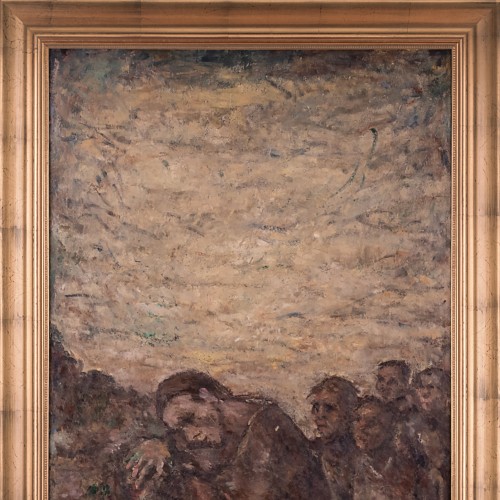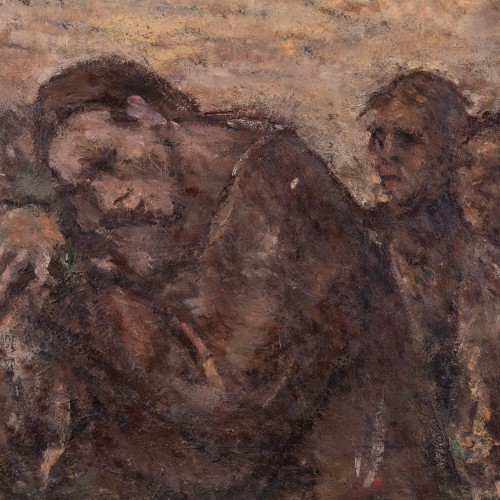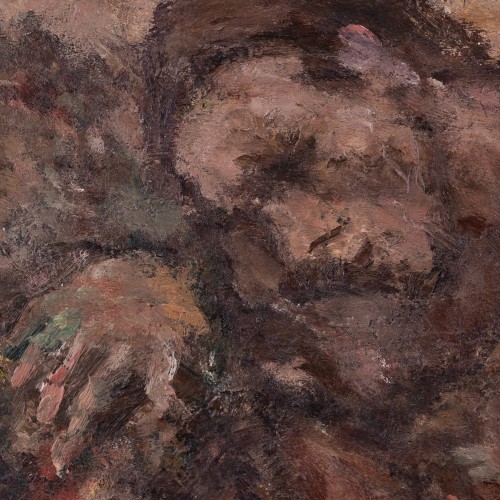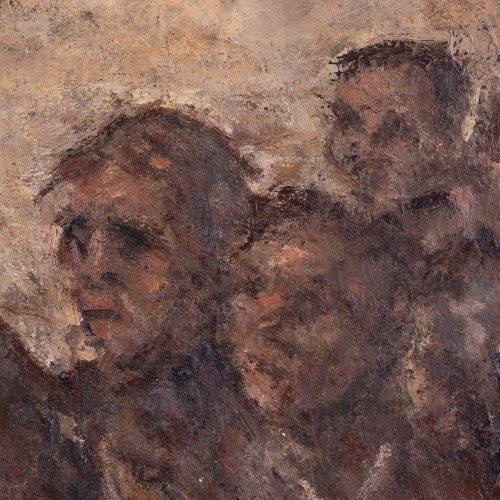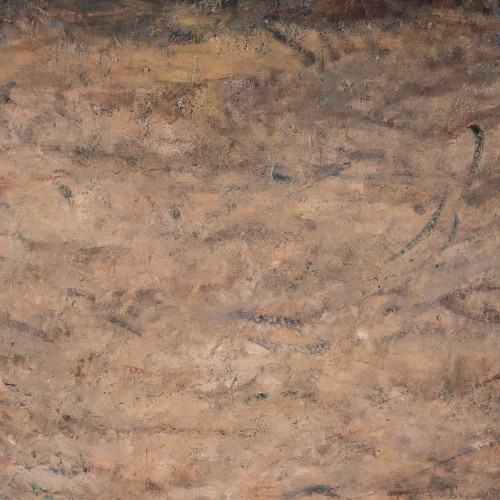Johannes Greenberg
(1887-1951)
Grief. 1943
Oil, plywood. 89 x 69 cm (framed)
price 100 000

One of the most important works of Johannes Greenberg’s oeuvre, which Hilja Läti, one of the most profound scholars of Greenberg’s oeuvre, found it necessary not only to mention in Greenberg’s monograph, but also to reproduce. It is also one of the few works in the history of Estonian art that deals explicitly with the mood of the 1940s, speaking of mourning and deprivation with the seriousness of Kristjan Raud. The work’s interesting composition has placed the people in the lower part of the painting, and the allocation of a large space to the sky makes them smaller and more defensible. The plot of the painting is not overly literary, the details are barely distinguishable in Greenberg’s use of colour, and only the most important part of the narrative is conveyed: the state of mind of the people. The desolate mood, which is enhanced by the nuanced use of brown tones, is not hopeless, however – the mourner is not left alone, Greenberg has also painted a group of people who may not be able to actively support the mourner, but are at least present and there, apparently even mourning.
Johannes Greenberg’s sensitive nature was able to perceive with astonishing accuracy both the details of colouration, appreciating the peculiarity of each brushstroke, and the details of the sadness of the human spirit. While in the 1930s he often concentrated on theatrical motifs, in the 1940s these are replaced by a different mood, where people step off the stage into real life and experience real emotions. For Greenberg, depicting the accentuation of the times was inevitable, because he could not have done otherwise. Although the painting is almost monochrome, it speaks of the richness and nuance of the human spirit.
The work was part of the collection of artist Olga Terri, whose work was influenced by Greenberg’s paintings.
Booking and purchase
Appearance in auctions
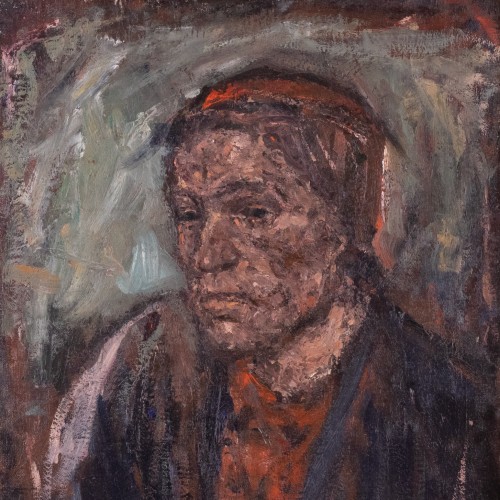
Portrait of a Woman
1940-1944. Oil, canvas 69.5 x 52 cm (framed)
ESTONIAN ART AUCTION - MID-19TH CENTURY TO 1965 Haus Gallery 06.05.2023
12 000
Final price: 12 000
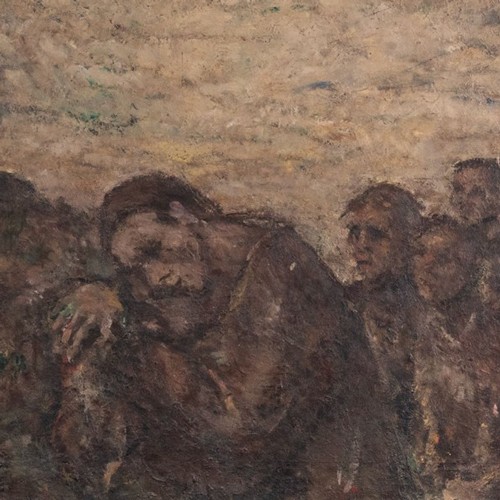
Grief
1943. Oil, plywood 89 x 69 cm (framed)
ESTONIAN ART AUCTION - MID-19TH CENTURY TO 1965 Haus Gallery 06.05.2023
17 000
Final price: 100 000
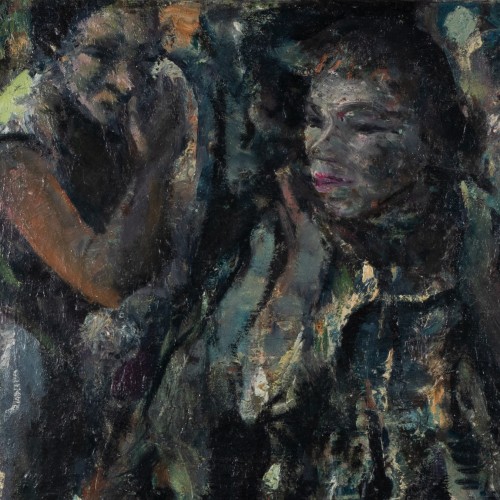
Two Women
1940-1944. Oil, canvas 74.5 x 63.4 cm (framed)
EARLIER ART CLASSICS Haus Gallery 29.10.2022
17 000
Final price: 26 000
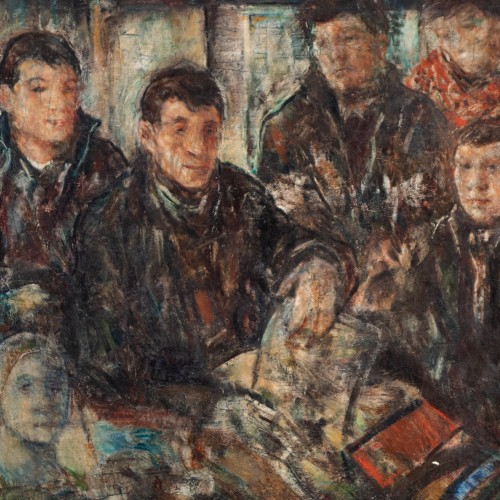
Composition
1940-1944. Oil, canvas 110.5 x 135.5 cm (framed)
EARLIER ART CLASSICS Haus Gallery 29.10.2022
28 000
Final price: 28 000
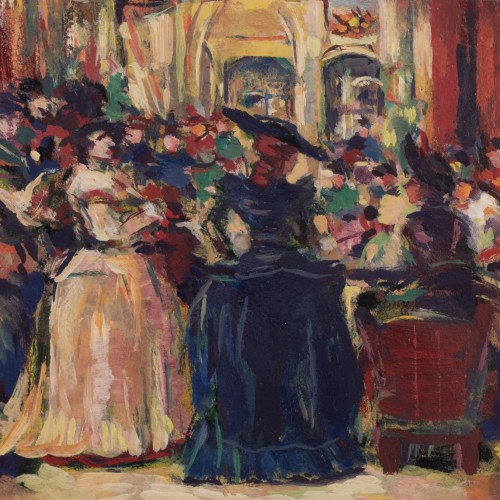
Ballroom Scene
1940s. Oil, paper Vm 17 x 18.2 cm (framed)
EESTI VANEMA KUNSTI KLASSIKA OKSJON Haus Gallery 07.05.2021
4 800
Final price: 8 900
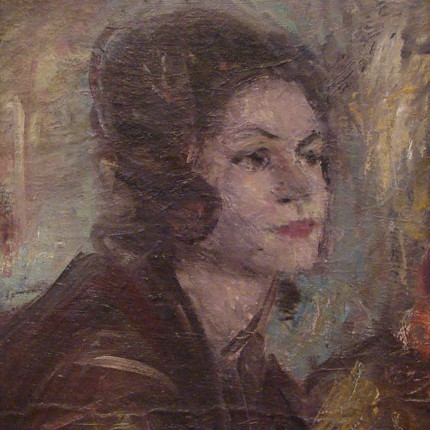
Daami portree
1946-1951. oil on cardboard 42 x 38 cm (framed)
Haus Gallery 25.10.2013
2 200
Final price:
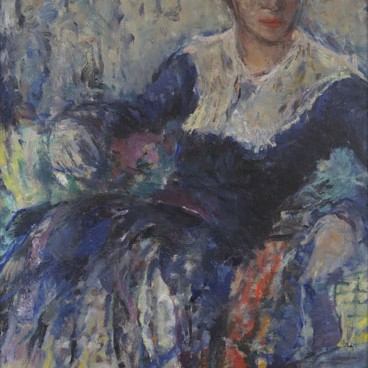
Näitlejanna
1940-1950. oil on plywood 60 x 48 cm (framed)
Haus Gallery 08.11.2010-10.11.2010
3 643
Final price: 3 771
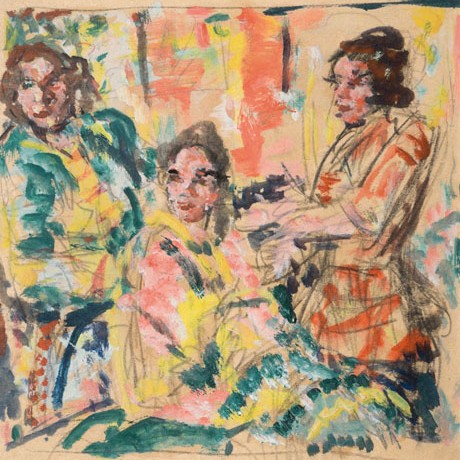
Näitlejad
1916-1918. oil, paper Vm 19.6 x 19.2 cm (framed)
HAUS GALLERY XXIII ART AUCTION 2008 autumn. Old Masters Paintings Haus Gallery 01.10.2008
3 132
Final price:
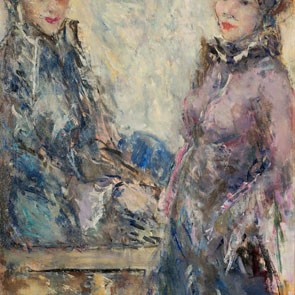
Kaks naist (Ootel)
1939. 59.7 x 38.5 cm
HAUS GALLERY´S 10. anniversary art auction Haus Gallery 25.09.2007
8 309
Final price: 25 565
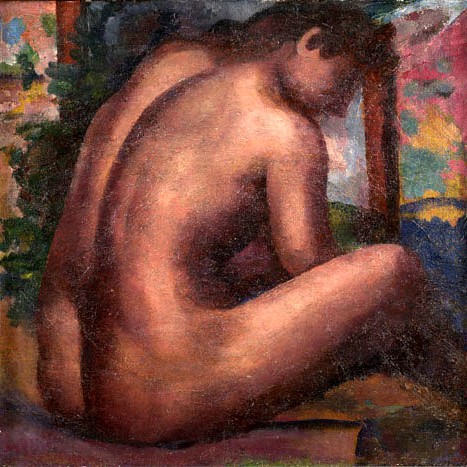
Istuv akt
1930-1931. Oil, canvas 35.3 x 35.8 cm (framed)
HAUS GALLERY XX ART AUCTION, 2007 spring Old Masters Paintings Haus Gallery 15.04.2007-24.04.2007
4 282
Final price: 8 372
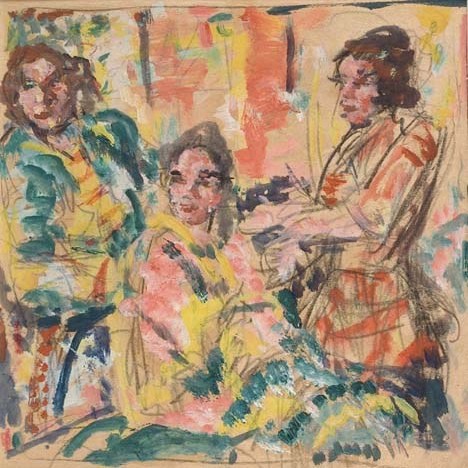
Näitlejad
1916. Oil on paper Vm. 19 x 19 cm
HAUS GALLERY XVIth ART AUCTION, 2005 spring Haus Gallery 25.04.2005
1 470
Final price: 2 301
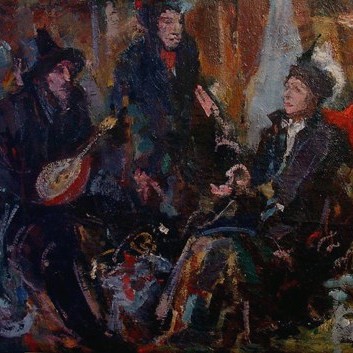
Näitlejad
1940. Oil on canvas 60 x 80 cm
HAUS / XIIth AUCTION, 2003 spring Haus Gallery 24.04.2003
4 090
Final price: 5 241
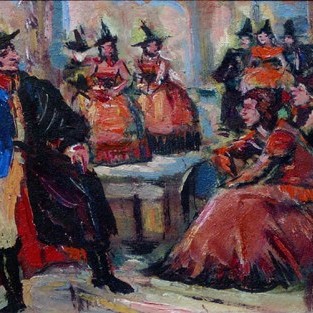
Teatristseen (Mustlasparun)
1940. Oil on cardboard 17 x 24 cm
HAUS / XIIth AUCTION, 2003 spring Haus Gallery 24.04.2003
1 470
Final price: 3 068
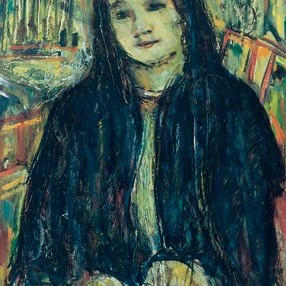
Tütarlaps
1938. Oil on cardboard 78 x 48 cm
HAUS / VII AUCTION, 2000 autumn Haus Gallery 26.10.2000
2 493
Final price:
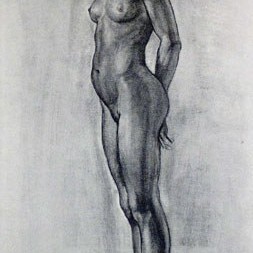
Mulatitar
1910. Coal, chalk, water-color 140 x 78 cm
HAUS / IV AUCTION, 1999 spring Haus Gallery 26.04.1999-24.04.1999
3 132
Final price:
Appearance in exhibitions
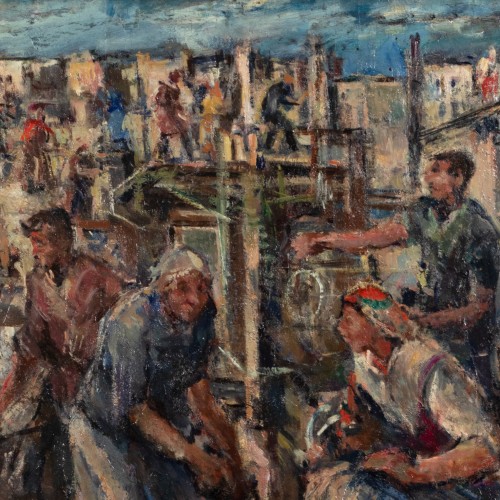
Figural Composition
Undated. Oil, plywood 64 x 48 cm (framed)
WORKS FROM TWO PRIVATE COLLECTIONS Haus Gallery 15.02.2023-13.03.2023
